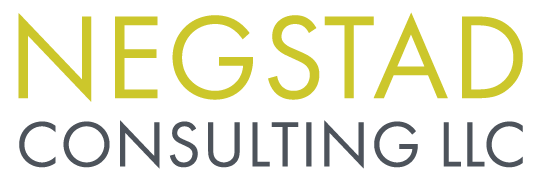5 Minutes on Turnover And Retention
You might be experiencing it at your own organization or seeing it in your sector.
Turnover rates are high.
In fact, in the nonprofit sector the voluntary turnover rate is nineteen percent. This is higher than the labor market as a whole, which has a turnover rate of twelve percent.
This is alarming for a few reasons. In addition to interrupting the flow of work, employee turnover costs organizations money.
Some of the causes for high turnover are out of our control.
Right now there is a general culture shift toward more fluidity in jobs. People are more willing to quit and look for better wages, flexibility and benefits elsewhere. There are also just more jobs than workers right now, meaning the United States is experiencing a labor shortage.
But there are some causes for high turnover that are in our control and this is where we should focus our energy.
The three I’d like to highlight are:
Not getting good supervision - anyone surprised this is where I want to focus? Afterall, as the saying goes employees don’t quit organizations, they quit bosses.
Burnout – According to one study as many as 30% of nonprofit employees report being burned out. You can check out my blog post on burnout for more details HERE.
Organizational cultures that aren’t inclusive and supportive, that over-emphasize productivity rather than more holistic approaches.
All three of these areas can have an impact on turnover and retention.
They are also interrelated.
So let’s explore some strategies you can use as a supervisor or leader to improve retention and reduce turnover related to these three causes of turnover.
Strategy 1: Train your supervisors to be people-centered rather than productivity-centered.
Hierarchical structures work against creating and maintaining organizational cultures that are life-giving and supportive for all employees.
One way you can combat this and intentionally shift the culture is to train your supervisors to be people-centered rather than productivity-centered.
We can support employees that get things done AND have a healthy life outside of work.
We can question what work we can let go of and what choices we have about if, how and when work gets done.
This can look a lot of different ways, and you can find some concrete tips in my burnout blog post.
One concrete example of a shift towards a people-centered organization is to have a culture, supported by policy, that supports and recognizes the need for rest and recovery as part of work after long days or big projects.
Strategy 2: Implement regular check-ins between supervisors and supervisees, including stay interviews.
Regular check-ins between supervisors and supervisees is a fairly basic recommendation. But it takes practice and intention to do them well and have resulting conversations that are meaningful and motivating.
You can find a lot of tips and advice in my four-part series on Performance Evaluation.
One tip I want to point out for meaningful regular check-ins is that it takes time and preparation from, and at times even training for, both the employee and the supervisor.
How do you give and receive meaningful feedback? How do you get in a growth mindset? How do you actively listen and use inquiry?
Supervisors can also be trained in what are called stay interviews, a common human resources technique where employees are asked about what’s going well and what they would change if they could. They are a great way to gauge the satisfaction of top employees that you’d really hate to lose. You can read more here.
Strategy 3: Move into new ways of working that embrace culture shifts.
What if we acknowledged and embraced culture shifts instead of fighting against them?
We could understand that an employee may only stay with us for one to two years and find systems to flow with that.
Think networked, adaptive, cyclical, agile ways of working that can cut down on the costs and disruptions of turnover.
Imagine self-motivating teams that organically emerge and disperse to engage with challenges and opportunities as they arise.
What if we invested in rigorous employee development programs because they keep employees more engaged while they are with you, even if you know they might not stay for the long-term?
We could focus less on attracting employees and instead meaningfully engage with communities, clients and networks in ways that proactively help us find employees.
We can ask questions that actively help us adapt.
For example: What do we know about our current turnover trends? What do we wish was the same or different about how we find and onboard new staff? Where is turnover most costly to us in terms staff stress and impact on mission work? So what is emerging as a main barrier or opportunity? Now what is one thing we can do to address the barrier or enhance the opportunity?
These are some pretty big, meaty strategies. But if you can, take 5 minutes right now and jot down what’s coming to mind.
Was there a new idea that came to you while reading? Or an idea I presented that you’d be excited to try out? What do you think is the biggest cause of turnover in your organization and what ideas do you have to improve retention or learn to go with the flow of more frequent turnover?

